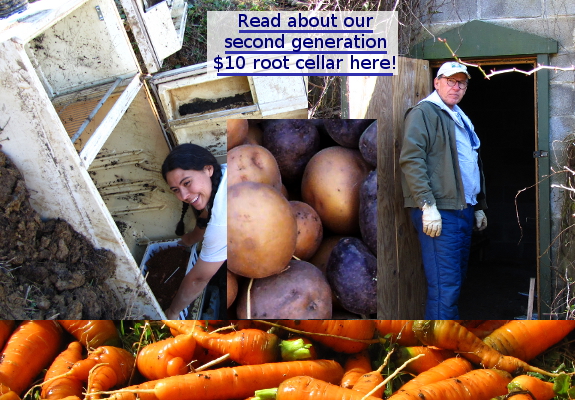
Filling the refrigerator root cellar
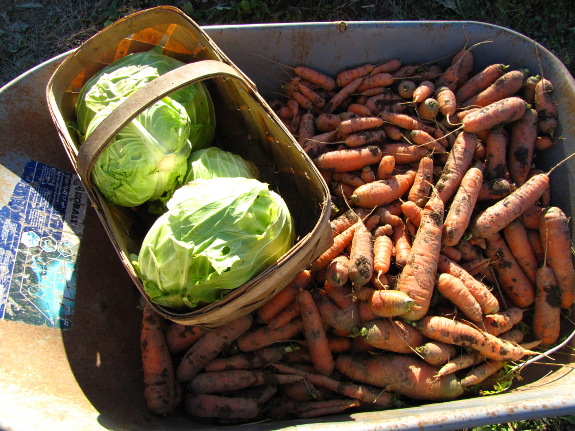
The real reason I moved
our refrigerator
root cellar resurrection to the top of the list is
that lows have hit 22 and there's no more room in our real fridge for
the rest of the cabbages and carrots. If I didn't want them to
freeze and ruin in the garden, these crops needed to find some cool,
damp storage immediately.
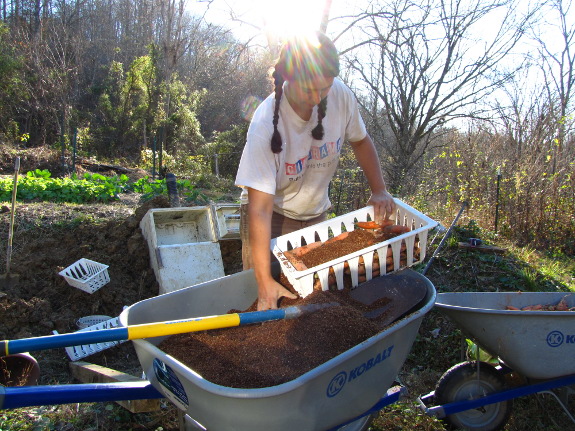
It's a bit risky to fill
the refrigerator root cellar up with valuable crops when we don't know
for sure if it'll hold
above-freezing temperatures (and refrain from falling
over again).
On the other hand, you can look at this a bit like putting tomato
plants in the forest garden --- a wheelbarrow load of
carrots is going to ensure I pay attention to our new experiment.
If there's a problem, we won't be waiting three years to fix it this
time.
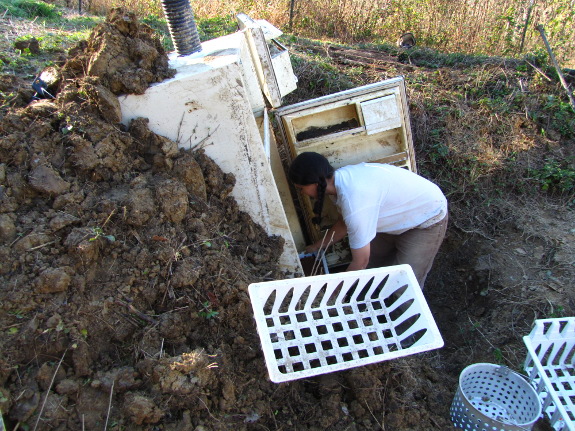
Usually, I sort my
carrots, putting the few that are broken, nibbled, starting to rot, or
excessively small on top for immediate consumption. But I don't
really know the intricacies of our fridge root cellar yet, so I opted
to leave the carrots all mixed together. That way I'm hedging my
bets --- if one area doesn't work right, all of my best carrots won't
happen to be there.
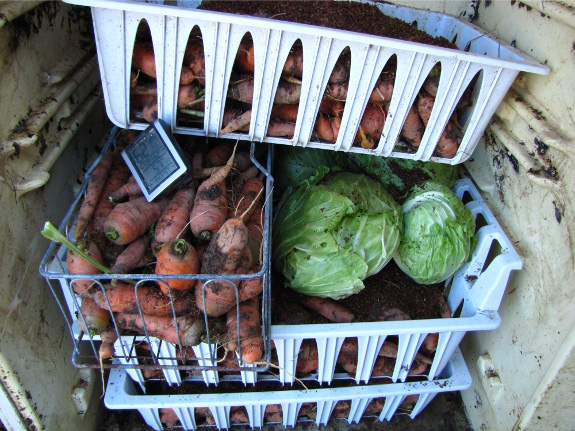
I packed some of the
carrots in sawdust and left some plain as an extra experiment.
While the keeping quality of the crops will be the real indicator of
root cellar function, Mark also tossed in a max./min.
thermometer. I'm ordering another analog
version since I have
a feeling the digital one won't last long in the damp conditions.
If the fridge works as
planned, I can see another one in our future. An afternoon's work
filled our current unit halfway up, and I haven't even moved our white
potatoes and fig scionwood out there yet. And once we start
having apples, we'll want to keep them in their own unit so the
ethylene given off by the fruits doesn't spoil the vegetables. So
many exciting experiments ahead!
Want more in-depth information? Browse through our books.
Or explore more posts by date or by subject.
About us: Anna Hess and Mark Hamilton spent over a decade living self-sufficiently in the mountains of Virginia before moving north to start over from scratch in the foothills of Ohio. They've experimented with permaculture, no-till gardening, trailersteading, home-based microbusinesses and much more, writing about their adventures in both blogs and books.
Want to be notified when new comments are posted on this page? Click on the RSS button after you add a comment to subscribe to the comment feed, or simply check the box beside "email replies to me" while writing your comment.

- Remove comment
- Remove comment
